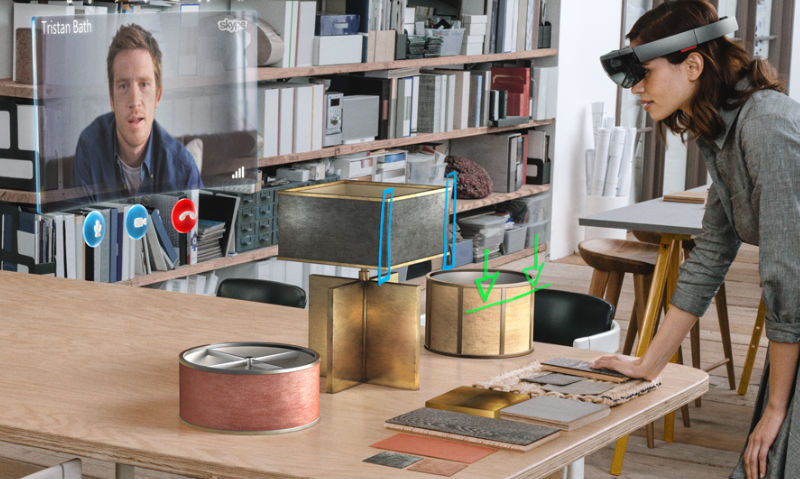Augmented reality and virtual reality may have started to interest enterprises two decades ago, but they have not yet fulfilled their promise, and the numbers for 2016 show that the market is not moving as fast as some expected.
In a recent study from Digi-Capital and Eyetouch Reality, Eyetouch CEO Tim Merel said AR will have the leading role in a $108 billion AR/VR market by 2021, with its own share of $83 billion.
Virtual Reality Market Overview
Over the past 3-4 years, virtual reality has been an area of big investments. Many people expected 2016 to be the “Year of Virtual Reality”, but it didn’t end up quite like that.
The success of HTC’s high-end Vive and Facebook’s Oculus Rift VR systems was hindered by delays and order cancellations. Sony had a solider release with a cheaper VR headset: the PSVR for PS4. At this point, Samsung’s Gear VR still leads the mobile VR market, with Google’s new Daydream VR platform following up.
More affordable VR headsets will most likely create more interest. Right now, VR doesn’t look very appealing to the mass consumer, as there still isn’t enough content to justify the high price. This is why revenue failed to meet expectations. But what about the enterprise?
Virtual Reality and the Enterprise
Even though virtual reality is considered more of a consumer focused product, there are already numerous industries using it, such as medicine, health care, education, and architecture, engineering, and construction.
One of VR’s advantages is the immersive experience, or the possibility to explore virtual worlds just as if you were there. That’s where the AEC industry comes in, where professionals are creating educational platforms – through recreation of famous landmarks all over the world – or interactive 3D models for architecture & construction work. For example, Autodesk’s LIVE feature lets users generate VR experiences of their models for design verification. Ford, the car manufacturer, is also using VR to help design new models and develop autonomous vehicle technologies.
In medicine, people have been using it for surgical trainings, PTSD treatments, therapy and other applications. For example, in April 2016, an operation to remove a malignant tumour was live-streamed in VR by Barts Health NHS Trust in London, where medical students could tune in with a VR headset, and watch it in 360-degrees.
The Surprising Success of Augmented Reality
Augmented Reality has been around for quite some time now, but only in 2016 it was, unexpectedly, considered “the next big thing”.
Microsoft kicked off 2016 by changing its focus. The HoloLens, which initially was designed as an entertainment device, shifted gears to cater for the enterprise. However, what truly made augmented reality sparkle was Niantic’s Android & IOS videogame: Pokémon GO. Because of this, some companies think smartphones are the right choice for AR, just like Google with its Tango AR software. However, smart glasses are the main AR platform companies have been working on for years — just like Microsoft’s HoloLens, ODG’s R-8/R-9 or DAQRI’s smart glasses — which have some limitations and are expensive, but provide a great hands-free experience.
Augmented Reality and the Enterprise
Although NASA is not exactly an enterprise, it is a good example related to the practical use of Microsoft’s HoloLens. At the Kennedy Space Center Visitor Complex, NASA recently offered visitors the opportunity to walk on Mars with the Microsoft HoloLens mixed reality headset and “visit” several sites on Mars.
Another example of HoloLens in action comes from Boeing’s subsidiary Insitu, which is using Microsoft’s HoloLens with drones to make fighting forest fires a lot safer for firefighters. The mix of a ScanEagle drone from Insitu with HoloLens allows operators to visualize a holographic map which can be manipulated to direct resources to where they’re most needed.
Wired published recently another good example of the use of Augmented Reality. A video that shows how the MIT Media Lab is using innovation to tackle large challenges like fighting pollution and urban modeling; the latter of which is being solved by using a combination of Lego bricks and augmented reality.
VR and AR in the Future
Although many of these technologies seem new, they have been around for decades. In fact, the first functional AR systems that provided immersive mixed reality experiences were invented in the early 1990s. Virtual Reality appeared earlier, as a garage project from 1985. While some say AR will grow bigger than VR, both technologies seem to be on the right track, with more affordable systems coming out, and more content being developed for each one, but 2017 might provide us a better insight.






